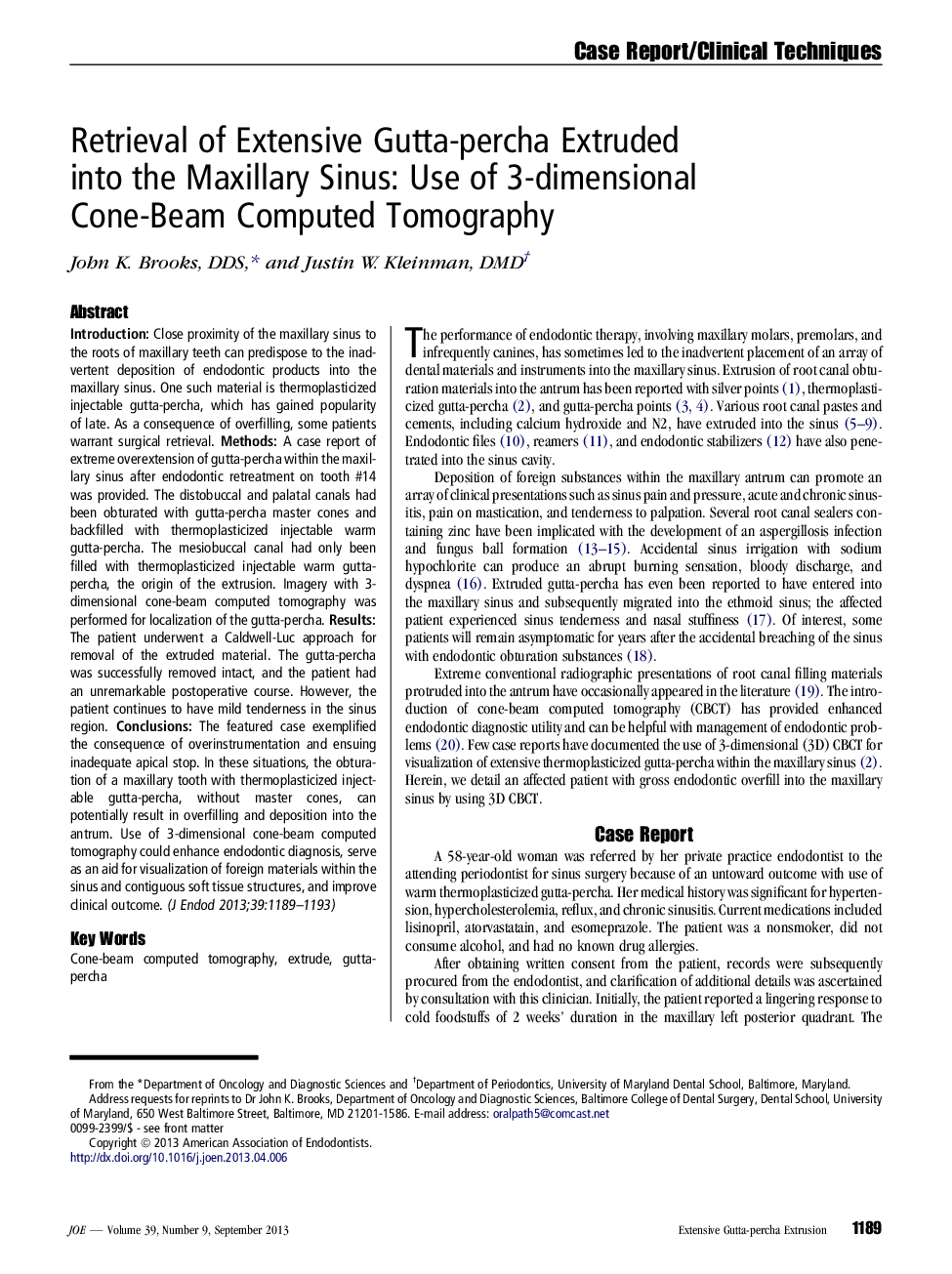| Article ID | Journal | Published Year | Pages | File Type |
|---|---|---|---|---|
| 3148045 | Journal of Endodontics | 2013 | 5 Pages |
IntroductionClose proximity of the maxillary sinus to the roots of maxillary teeth can predispose to the inadvertent deposition of endodontic products into the maxillary sinus. One such material is thermoplasticized injectable gutta-percha, which has gained popularity of late. As a consequence of overfilling, some patients warrant surgical retrieval.MethodsA case report of extreme overextension of gutta-percha within the maxillary sinus after endodontic retreatment on tooth #14 was provided. The distobuccal and palatal canals had been obturated with gutta-percha master cones and backfilled with thermoplasticized injectable warm gutta-percha. The mesiobuccal canal had only been filled with thermoplasticized injectable warm gutta-percha, the origin of the extrusion. Imagery with 3-dimensional cone-beam computed tomography was performed for localization of the gutta-percha.ResultsThe patient underwent a Caldwell-Luc approach for removal of the extruded material. The gutta-percha was successfully removed intact, and the patient had an unremarkable postoperative course. However, the patient continues to have mild tenderness in the sinus region.ConclusionsThe featured case exemplified the consequence of overinstrumentation and ensuing inadequate apical stop. In these situations, the obturation of a maxillary tooth with thermoplasticized injectable gutta-percha, without master cones, can potentially result in overfilling and deposition into the antrum. Use of 3-dimensional cone-beam computed tomography could enhance endodontic diagnosis, serve as an aid for visualization of foreign materials within the sinus and contiguous soft tissue structures, and improve clinical outcome.
